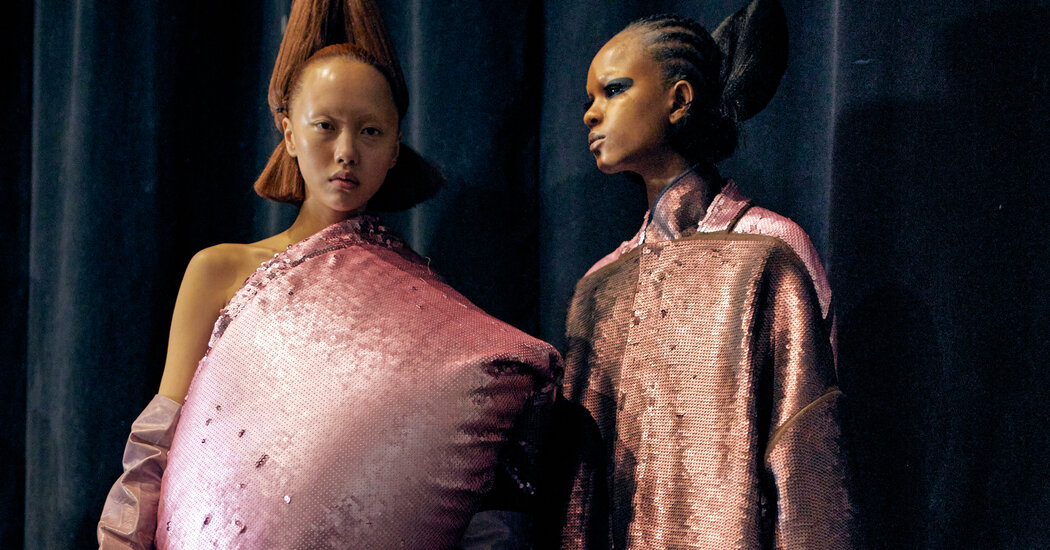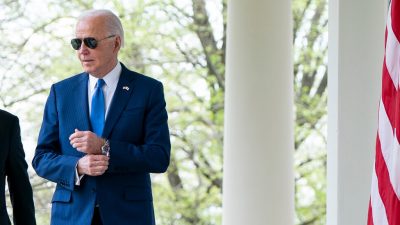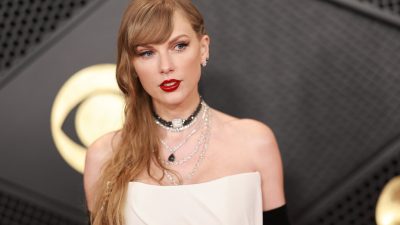PARIS — Rick Owens, paramour of the strange and the so-called prince of the underground, can seem like he’s on another planet, but he may actually be the most relevant designer of the season.
There he was, standing in the depths of the Palais de Tokyo, the contemporary art museum, wearing giant platform shoes and a bulbous leather jacket, and talking about his latest collection, which was named Luxor, though not for the reasons one might expect.
Not because, for example, it was full of Sphinx prints or sandy shades, the usual fashion travel-related “inspiration.” But because he has been spending a fair amount of winter vacation time in the shade of the pyramids and that got Mr. Owens thinking.
“I mean, they have lasted and been occupied by different civilizations and added on to, but life goes on and they endure and there’s something very reassuring about that,” he said, as fog machines were being primed overhead (Mr. Owens loves a bit of fog). “Whatever conditions we might have to endure in our lifetime.
“There’s been a lot of irony and at times contempt in fashion, and I wanted to do the opposite of that,” he continued. “Now is a time to be polished and pulled together; earnest, and more formal, out of respect for what other people are living through.”
Yeah, he was talking about Ukraine, among other things, but rather than go back to the post-World War II period, as so many designers have this week in Paris, he went somewhere entirely other. Maybe the royal court on Planet Zog (or maybe just Planet Rick) viewed through a Cecil B. DeMille-size lens, with a sweeping grandeur that was vintage and futuristic at the same time.
Mr. Owens’ clothes may look weird and escapist, but they are grounded in reality, which is what makes them so good. They give regality to the stuff of daily life, and who can’t use a dose of that? Plus, he sells everything he shows. In his world, there’s no such thing as just-for-the-runway.
Giant puffy garlands covered in matte sequins in rose, gold, black and silver curved around and about the body, like big squishy doughnuts hugging the torso, over long dresses cut to the waist on one side to expose a hip (and some matching briefs), trailing down on the other side like a train; later, they came in little life rafts around the biceps to mimic the poufs of Elizabethan dress. The shoulders of satin jackets jutted skyward to frame the face. Denim faded into a sea of greens and blues in cumulous cloud layers, or hefty fringe. There were metallic capes and little jackets that twirled out from the clavicle — wearable (the word of the season), and not just in the Owens context.
It’s been 20 years since he arrived in Paris, a spooky wraith from an endless California rave toting a suitcase full of washed-out leather jackets cut like couture who has grown into one of the most successful Americans to ever dare breach the pantheon of French fashion. As if in recognition, along with all the usual familiar weirdos in the audience wearing their Owens finery and watching this collection was a former French minister of culture, Jack Lang.
Mr. Owens has done it not by putting himself in service to someone else’s heritage brand, but by defining his own. From the start he has preached a wider understanding of beauty; using his vision of the “otherworldly” as an argument for tolerance. Since the pandemic began, however, he has been suffusing his work, which could veer toward the aggressive, with a kindness and optimism that has made it seem particularly germane. He cited all the factories and fabric origin stories of his pieces in his show notes, both as a nod to sustainability (he’s trying) and simply as credit where credit was due.
The result is that rare and essential quality: a recognizable aesthetic language all its own. It’s very hard to achieve.
Matthew M. Williams has not been able to figure it out in his almost three years at Givenchy, though this collection was at least a step forward, with a focus on elegance and shoulders (the big shoulder is resurgent, often the broader the better). Think sweeping greatcoats, floor-length leather skirts with deep-V shirts and skinny scarves tied loosely at the neck and dangling to the ground, and a whole evening section of Hepburn-esque black dresses, plus some pearly numbers. They are chic but generic, like a paint-by-numbers version of the archive.
By contrast, Daniel Roseberry has honed in on a clear lexicon at Schiaparelli, leaning into the house’s singular combination of drama and surreal humor, which is why his couture speaks so effectively to the red carpet set (most recently, Michelle Yeoh wore Schiaparelli when she made history as the first Asian to win the Screen Actors Guild Award for best actress). Now, with his first ready-to-wear show for the brand, he’s on a mission to make the extremes somewhat more accessible without toning down the attitude or the double entendres.
So there was the Schiap keyhole, winking from the center of a slinky jersey dress; here was a sharp trouser suit, the lapels and pockets lined in gold-edge dressmaker’s measuring tape. There was a black overcoat, gold buttons glinting strategically from each nipple; here was a “fur” chubby made entirely of leopard-spotted silk fringe. And there was a velvet strapless gown with a gold face — jeweled eyes, nose, mouth — on the bodice.
You could see where he was going.
Sumber: www.nytimes.com












